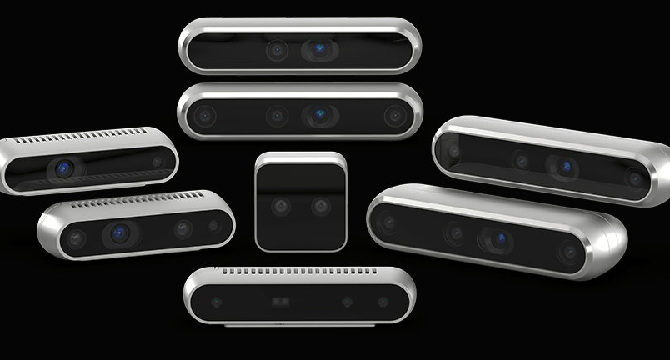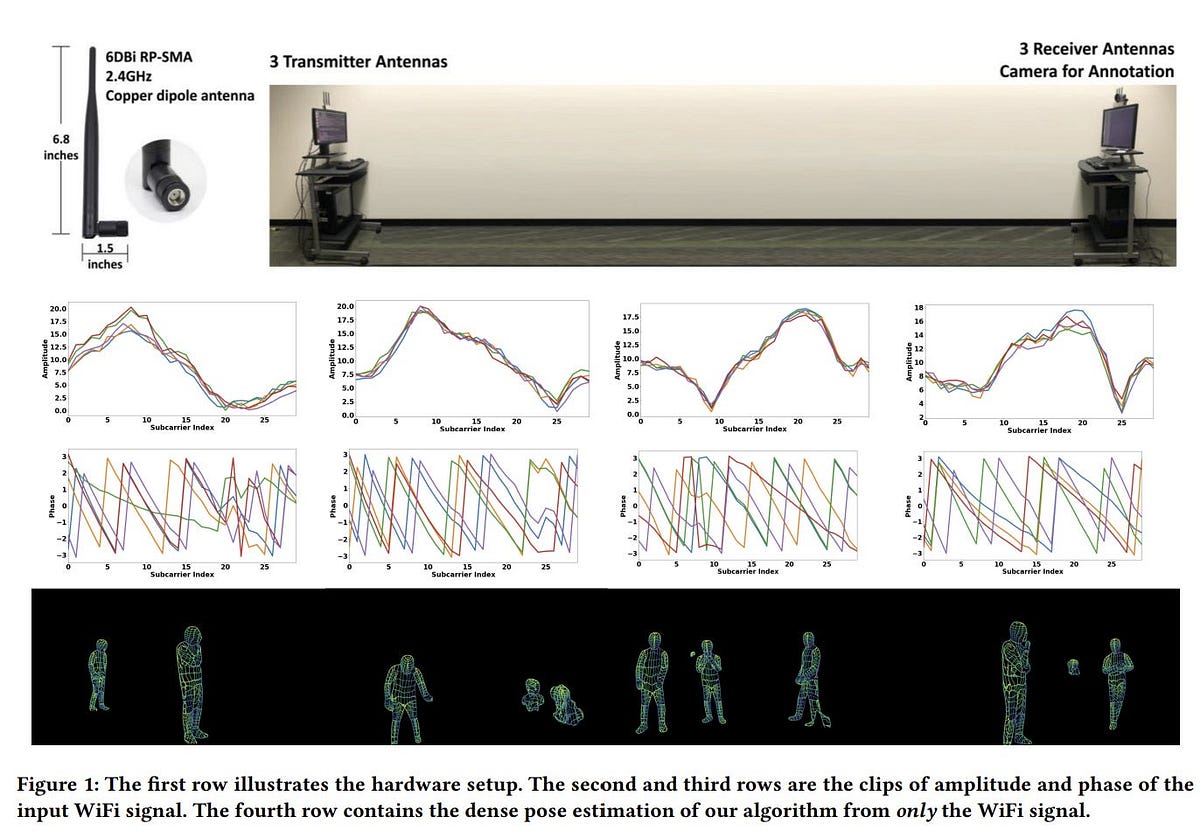Robotics News
The Robot Report
432

Trends in supply chain robotics with John Santagate of infios
- John Santagate, senior vice president of global robotics at Infios, discusses the impact of automation and AI on warehousing, recent trade shows insights, challenges posed by tariffs, and potential for humanoid robots in the industry.
- Attabotics filed for bankruptcy, laid off staff, and raised $194 million; Interact Analysis reduced its 2025 mobile robot market forecast due to industry challenges and U.S. tariffs; Johns Hopkins University developed a robot capable of removing a gallbladder from a realistic patient model autonomously.
- The podcast features interviews with Elliot Helms and Aleksandr Malashchenko about Novanta and Revimo's partnership, as well as with John Santagate about his journey in the supply chain robotics industry and Infios' recent rebranding.
Read Full Article
14 Likes
Dev
281

Image Credit: Dev
ROS 2: A Growing Reference from My Robotics Work
- ROS 2 enables control, maintenance, and design of robotic systems via distributed nodes.
- Setting up ROS 2 involves installation, sourcing in terminal, workspace organization, and building.
- Creating nodes, packages, publishers, subscribers, and action nodes with conventions and best practices.
- Utilizing topics, message types, Python code structures, logging, sensor data integration, and YAML motion sequences.
- Exploring motion sequence YAMLs, machine learning, and smart robotics advancements in ROS 2.
Read Full Article
16 Likes
The Robot Report
112

Kraken Robotics nets $115M for marine systems in public offering
- Kraken Robotics Inc. closed an underwritten public offering, raising over $115 million by offering 43.2 million common shares at $2.66 per share.
- The successful equity offering demonstrates investor support and Kraken's vision to scale its business, pursue acquisitions, and enhance value for customers and shareholders.
- Kraken specializes in subsea imaging technologies, offering 3D imaging sensors, power systems, and uncrewed maritime systems to address ocean challenges.
- The company acquired 3D at Depth Inc., focusing on high-resolution lidar imaging, as it aims to secure global contracts and expand its presence in the marine systems industry.
Read Full Article
6 Likes
The Robot Report
89

TRI: pretrained large behavior models accelerate robot learning
- TRI's study on Large Behavior Models (LBMs) explores robot training potential.
- Study shows LBMs can learn hundreds of tasks with 80% less training data.
- LBM pretraining offers consistent performance improvement and enables learning of new tasks.
Read Full Article
5 Likes
Discover more
IEEE Spectrum
345

Image Credit: IEEE Spectrum
Video Friday: Reachy Mini Brings Cute to Open-Source Robotics
- Video Friday is a selection of robotics videos shared by IEEE Spectrum robotics.
- Various robotics videos were featured, including Reach Mini by Hugging Face, Toyota Research Institute, and Kinisi Robotics.
- The videos also showcased quadrupedal robots, bimanual humanoids, and other innovative robotics projects from different organizations like University of Tokyo and Pudu Robotics.
- The content included interesting and diverse robotics projects, with a mix of humor and technology insights.
Read Full Article
20 Likes
The Robot Report
78

Hugging Face launches Reachy Mini robot as embodied AI platform
- Hugging Face and Pollen Robotics have launched Reachy Mini, an open-source robot for enthusiasts and researchers to experiment with human-robot interaction and AI.
- Reachy Mini features a compact design with motorized head and body rotation, multimodal sensing capabilities, and 15-plus robot behaviors at launch.
- The robot comes in two versions sold as kits, emphasizing assembly to deepen understanding of mechanics, and offers full programmability in Python with plans for JavaScript and Scratch support.
- Reachy Mini's integration with Hugging Face provides access to open-source models for speech, vision, and personality development, fostering collaboration and innovation with its community-driven approach.
Read Full Article
4 Likes
TechCrunch
393

Image Credit: TechCrunch
Humanoids, AVs, and what’s next in AI hardware at TechCrunch Disrupt 2025
- TechCrunch Disrupt 2025 is set to take place at Moscone West in San Francisco from October 27 to 29, gathering over 10,000 startup and VC leaders for discussions on groundbreaking tech and bold ideas.
- One of the anticipated sessions will focus on the future of AI hardware, showcasing robotics and autonomous systems advancements, presented by industry leaders Raquel Urtasun and Jeff Cardenas.
- Jeff Cardenas, co-founder of Apptronik, aims to develop advanced humanoid robots for safe human interaction, while Raquel Urtasun, founder of Waabi, focuses on creating cutting-edge autonomous vehicle systems.
- The session will emphasize the vital role of AI hardware in bridging intelligence with action, discussing advancements, challenges, and breakthroughs in the field that will shape the next phase of AI robotics and autonomous systems.
Read Full Article
23 Likes
Siliconangle
68

Image Credit: Siliconangle
Intel’s RealSense spins out with $50M in funding to help AI humanoid robots see the world
- Intel's computer vision subsidiary RealSense has become a standalone company after receiving $50 million in funding.
- The funding round, led by an unnamed semiconductor private equity firm, will enable RealSense to expand into AI, robotics, and biometrics markets.
- RealSense specializes in depth and tracking for robots and drones, with popular 'depth cameras' that help devices perceive and understand 3D environments.
- The company sees significant opportunities in the robotics and biometrics markets as it plans to accelerate its product development and expand its team with the funding.
Read Full Article
2 Likes
TechCrunch
162

Image Credit: TechCrunch
RealSense spins out of Intel to scale its stereoscopic imaging technology
- RealSense, a technology company specializing in stereoscopic imaging, has spun out of Intel after 14 years of development within the semiconductor giant.
- RealSense's stereoscopic imaging technology uses two images of the same object from different angles to create depth and is enhanced with infrared light, aiding robots, drones, autonomous vehicles, and facial authentication systems in understanding the physical world.
- CEO Nadav Orbach highlighted the importance of RealSense's 3D perception abilities for machines operating in the physical world, noting the applicability of their technology in various sectors beyond robotics, such as fish farms and food tracking in restaurants.
- RealSense's independence aims to meet the increasing demand for its technology, with a recent $50 million Series A funding round to boost go-to-market efforts, enhance technology for improved safety, and realize advancements in human-robot interactions and access control.
Read Full Article
9 Likes
The Robot Report
138

Diligent Robotics hires 2 former Cruise execs to scale Moxi
- Diligent Robotics hires former Cruise executives, Rashed Haq as CTO and Todd Brugger as COO, to scale its Moxi robot beyond hospital logistics in the U.S.
- Diligent Robotics focuses on advancing healthcare automation with Moxi, deployed in over 30 U.S. hospitals, resulting in over one million deliveries and saving hospital staff nearly 600,000 hours.
- The addition of Haq and Brugger from Cruise brings expertise in autonomous vehicles and scaling self-driving technology to humanoid robotics for Diligent Robotics.
- Diligent Robotics plans to expand Moxi's applications into assisted living facilities and adopts a hybrid autonomy approach, combining classical robotics reliability with next-gen AI models.
Read Full Article
6 Likes
The Robot Report
156

Interact Analysis slashes its mobile robot outlook amid tariff uncertainty
- Interact Analysis revises mobile robot market forecast due to global challenges and uncertainties.
- Market forecast for 2025 was reduced by $800 million, with lower growth predicted.
- Factors include tariffs, geopolitical issues, and adjustments in forecasting methodology.
- Tariffs impact global supply chains, causing delays and uncertainty in capital investments.
Read Full Article
8 Likes
Siliconangle
397

Image Credit: Siliconangle
Cobionix raises $3M to build autonomous medical robotics platform
- Cobionix Corp., a Canada-based medical robotics company, raised $3 million led by TitletownTech, Lions Investment, and Dr. Paul McBeth.
- The funding will support the development of their robotic platform, Codi, designed for autonomous diagnostic ultrasound procedures in remote locations.
- Codi is described as a versatile medical collaborative robotic platform adaptable for various patient-facing tasks through simple tool changes.
- The company plans to launch pilot programs for Codi in August, with a commercial launch in the U.S. scheduled for 2026.
Read Full Article
23 Likes
Medium
106

Image Credit: Medium
Radio Waves to See Through Walls
- Research from Carnegie Mellon University previously demonstrated the ability to see through walls using Wi-Fi signals and neural networks.
- MIT developed a new sensor called mmNorm, leveraging radar mounted on a robotic arm to detect objects inside closed spaces.
- mmNorm creates a 3D map of vectors representing the object's surface orientation, achieving a reconstruction accuracy of 96% on everyday objects.
- Potential applications include enhancing robotics, augmented reality, smart homes, military uses, while raising privacy concerns due to the technology's surveillance capabilities.
Read Full Article
6 Likes
The Robot Report
202

GFT Technologies and NEURA Robotics partner to build software for physical AI
- NEURA Robotics partners with GFT Technologies to develop software for physical AI, combining robotics and artificial intelligence.
- GFT brings its expertise in AI software and digital platforms into the robotics realm through this partnership.
- NEURA aims to bridge the gap between software intelligence and physical action with GFT's technological expertise in AI software engineering.
- NEURA has pioneered cognitive robotics that enable machines to learn, adapt, and act autonomously in real-world environments.
Read Full Article
12 Likes
For uninterrupted reading, download the app